#nuts bags exporter
Text
#Nuts & Fruits Bags exporter#nuts bags supplier#dry fruits packaging#nuts bags manufacturer#nuts bags exporter#fruits bags manufacturer#Nuts & Fruits Bags supplier#fruits bags supplier
0 notes
Text

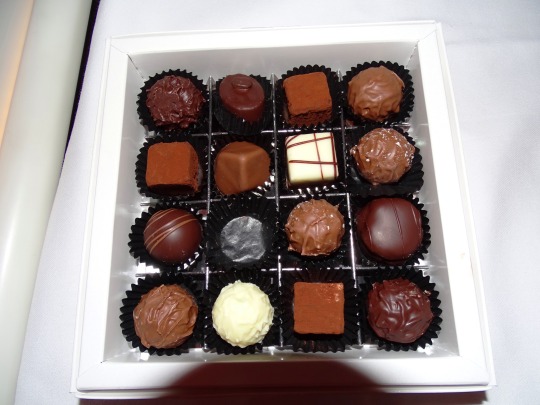

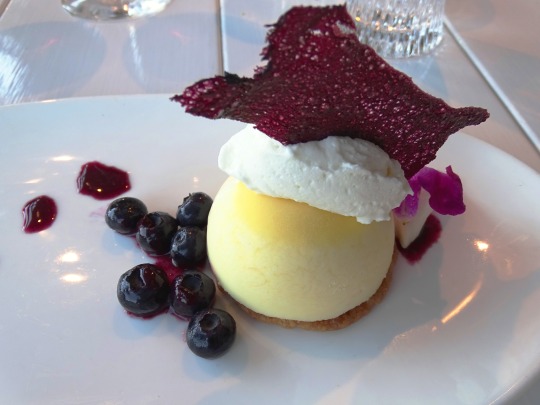

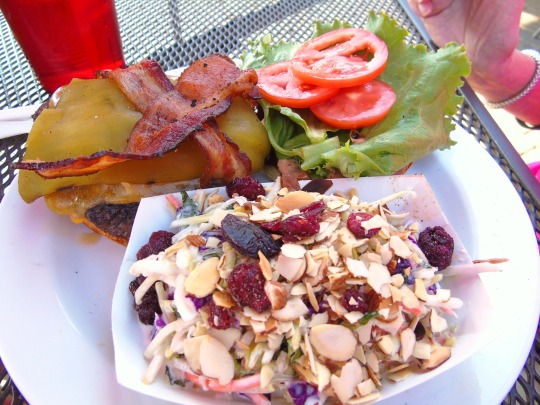







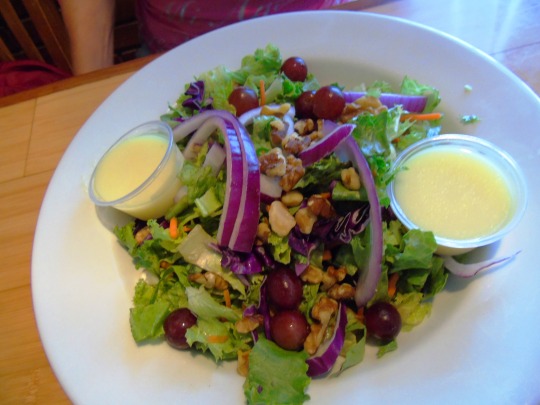


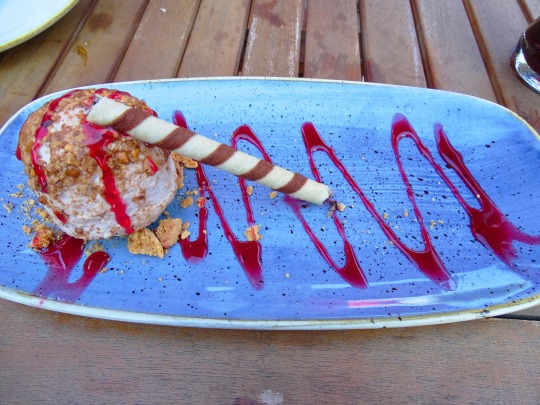

National Walnut Day
Go nuts for walnuts! These crunchy delights pack a punch of flavor and nutrition in every bite. Sprinkle them on salads, bake them into treats, or snack on them straight from the bag. It's a nutty good time!
Go nuts about walnuts in honor of National Walnut Day! This ancient, healthful nut makes a great addition to sweet treats, salads, trail mixes and so many other interesting dishes. While other nuts often take center stage, the walnut is absolutely worth celebrating and appreciating on National Walnut Day.
History of National Walnut Day
As the oldest known tree that has provided food to humans, walnuts have a history that can be traced back for thousands of years. It didn’t take long for humans to discover that the walnut is an easy to store and simple to eat nut. Plus, it travels well and offers great nutritional benefits.
In Persia, the walnut was referred to as the Royal Nut and it was only allowed to be eaten by people of royal heritage. During the reign of Alexander the Great, the walnut was brought to Greece from Persia and it was referred to as the Persian Nut for more than 1000 years. However, over time, the Greek version became smaller and inferior to the Persian walnut. In fact, the Greeks were envious of the Persian walnut, so they brought some Persian cultivars back to Greece to improve their breeds.
The Greek name for the walnut is karyon, which means head. This is actually fairly spot on, because the outside shell resembles a human head and the interior nut looks a bit like a brain!
Walnuts likely made their way further into Europe somewhere between 500–700 BC and then moved west after that. The nut probably traveled to the British Isles with the Roman Empire. It was somewhere around this point that it picked up its name “English walnut”, which is used to distinguish it from the black walnut.
Eventually, the walnut crossed the ocean and found a path to the New World. It was a group of Franciscan Fathers who found that the climate of Southern California was an important one for growing these deciduous trees. And this is likely the reason they picked up the name “mission walnuts”. California walnuts have become so popular that they account for 99% of the commercial walnut industry in the United States, a large portion of walnut trade in the world.
National Walnut Day dates back more than 70 years! It was in 1949 that the Walnut Marketing Board in the United States established the day with the purpose of celebrating and promoting this delicious and nutritious nut. US President Dwight D. Eisenhower made the day a public holiday in 1958 and National Walnut Day has continued to be celebrated every year since that time.
National Walnut Day Timeline
7000 BC Humans cultivate walnuts
The oldest tree food known to man, walnuts are cultivated starting in Persia.
1754 BC First documented account of the walnut
The cultivation of the walnut is mentioned in The Code of Hammurabi, the oldest code of laws in the world.
600 BC Walnut plants arrive in Europe
Around this time, the walnut plant makes its way from Persia into Europe.
17th Century AD Walnuts land in America
English settlers are responsible for bringing walnut plants to the New World.
Late 1900s Walnuts are cultivated in Chile
The climate in Chile does well for growing walnuts and the country eventually becomes the world’s third largest walnut exporter.
How to Celebrate National Walnut Day
Enjoy tons of fun on National Walnut Day by celebrating in style with some of these tasty ideas:
Learn Some Health Benefits of Walnuts
National Walnut Day is a perfect time to get a bit more familiar with some of the health benefits that are offered by this little nut. Take a look at these ways that the walnut is a healthy choice for snacking and baking:
Filled with Antioxidants
High in Healthy Fat
Promotes Gut Health
May Decrease Inflammation
Walnuts contain the most antioxidants of any of the commonly eaten nuts. The high Vitamin E content, melatonin and polyphenols can help to prevent oxidative damage and promote the lowering of “bad” cholesterol.
Omega-3 fat is an essential ALA (alpha-linolenic acid) that is a vital part of the human diet, especially for the prevention of heart disease. A single one ounce serving of walnuts provides a full daily supply of this important nutrient.
Walnuts offer essential bacteria and microbes that help with the functioning of overall gut health.
One of the common triggers for health problems in inflammation and walnuts offer nutrients, such as polyphenols, that can reduce oxidative stress that tends to cause inflammation. This could be beneficial in reducing heart disease, type 2 diabetes, Alzheimer’s disease and even cancer.
Make Some Candied Walnuts
While candied pecans and toasted almonds are often thought of as some favorite snacks made from nuts, candied walnuts are absolutely worth trying out. Candied walnuts are delicious for snacking, adding as a topping to salads or used as a garnish on cakes and other sweet treats. And, they’re super easy to make!
Really, it’s as simple as just three ingredients: walnuts, butter and sugar. Add all of the ingredients to a skillet and heat for five minutes over medium heat, stirring constantly. Separate nuts on parchment paper and allow to cool.
Share Fun Facts About Walnuts
One super clever way to raise awareness about the goodness and health of walnuts might be to learn a few bits of trivia about this nut that can be shared. Tell friends and coworkers about some fun facts while encouraging them to celebrate National Walnut Day in their chosen fashion.
Get started with some of these:
Even since ancient times, walnuts have been used for various health benefits and have even been considered to be medicinal for treating issues such as bad breath, wound healing and reduction of inflammation.
Walnut trees can grow to be very large, up to 60 feet tall. They can produce walnuts for more than 100 years!
Walnuts are best when kept cool, so it’s ideal to store them in the refrigerator or freezer for the best flavor and the longest life.
The state of California produces approximately one billion pounds of walnuts every single year. Now that’s a whole lot of nuts!
Make Baked Goods with Walnuts
Enjoy the delicious National Walnut Day by getting some walnuts for the kitchen and adding them to a variety of baked goods. This might mean adding chopped walnuts to a loaf of banana bread, a selection of oatmeal muffins, a pan of freshly baked brownies or a variety of other tasty baked treats. Be sure to bake up extra treats with walnuts and pass them out at work, share them with neighbors and offer them to family members in observance of National Walnut Day!
National Walnut Day FAQs
Are walnuts good for you?
Some studies have shown that walnuts are a source of vitamins and minerals, as well as lowering “bad” cholesterol.
How to toast walnuts?
Walnuts can be toasted in a single layer for 8-10 minutes at 350 F.
Can dogs eat walnuts?
Though it may not hurt them to have a stray walnut, dog owners should avoid feeding them to dogs as they can be a choking hazard.
Do walnuts go bad?
When exposed to heat for a period of time, walnuts can begin to smell rancid and taste bad.
Do walnuts have protein?
Yes, walnuts have 4.5 grams of protein per ¼ cup.
Source
#Lemon Semifreddo with walnut florentine#Manjar blanco with honey and nuts#dessert#restaurant#salami#olives#Tartufo#Germany#Spain#travel#vacation#Chef's Salad#Chocolate Frey#Lindt & Sprüngli#Lindt#Swiss chocolate is the best#I only eat Swiss chocolate#Lindt Pralines Connaisseurs#Lindt Pralinés du Confiseur#Honorary Texan Burger#USA#National Walnut Day#17 May#original photography#NationalWalnutDay
3 notes
·
View notes
Text

Food Grade Jute Bag Produced and Exported by Asia Jute Bag Sack Company
Understanding Food Grade Jute Bags
Food grade jute bags are specialized packaging solutions designed for the storage and transportation of food products such as grains, pulses, nuts, and spices. Made from natural jute fibers, these bags are manufactured to meet stringent food safety standards, ensuring the integrity and freshness of the packaged goods.
Importance of Food Safety
Food safety is of paramount importance in the packaging and handling of food products. Food grade jute bags provide a hygienic and secure packaging solution, protecting against contamination and spoilage while preserving the nutritional value and quality of the enclosed food items.
Asia Jute Bag Sack Company: Leading the Way in Food Grade Packaging
Commitment to Quality and Safety
Asia Jute Bag Sack Company is committed to upholding the highest standards of quality and safety in the production of food grade jute bags. With state-of-the-art manufacturing facilities and rigorous quality control measures, the company ensures that every bag meets or exceeds industry regulations and customer expectations.
Customized Packaging Solutions
The company offers customized packaging solutions tailored to the specific needs of food producers and exporters. From bag size and weight to printing and labeling requirements, Asia Jute Bag Sack Company collaborates closely with clients to deliver food grade jute bags that meet their exact specifications and branding preferences.
Ethical Production Practices
Upholding Ethical Standards
Asia Jute Bag Sack Company upholds strict ethical standards in its production process, ensuring fair wages, safe working conditions, and respect for labor rights. By prioritizing the welfare of its employees and suppliers, the company fosters a culture of integrity and social responsibility.
Environmental Sustainability
In line with its commitment to sustainability, the company implements eco-friendly practices throughout its operations, minimizing environmental impact and promoting resource conservation. Food grade jute bags produced by Asia Jute Bag Sack Company are biodegradable and compostable, offering an eco-conscious packaging solution.
Export Excellence and Global Impact
Global Market Reach
Asia Jute Bag Sack Company has established a strong presence in the global market, exporting food grade jute bags to customers across continents. Its extensive distribution network and efficient logistics ensure timely delivery and superior service, meeting the diverse needs of clients worldwide.
Empowering Local Communities
The company's export activities positively impact local communities by creating employment opportunities and supporting sustainable livelihoods in jute-producing regions. By investing in education, healthcare, and infrastructure, Asia Jute Bag Sack Company aims to drive social and economic development.
Food grade jute bags produced and exported by Asia Jute Bag Sack Company represent the perfect combination of quality, safety, and sustainability. With a focus on ethical production practices, environmental stewardship, and customer satisfaction, the company continues to be a preferred partner for food producers and exporters seeking premium packaging solutions that ensure the safety and integrity of their products.
FAQs
What are food grade jute bags used for? Food grade jute bags are used for the storage and transportation of food products such as grains, pulses, nuts, and spices, ensuring their safety and freshness.
Are food grade jute bags safe for packaging food products? Yes, food grade jute bags are manufactured to meet stringent food safety standards, ensuring the integrity and safety of the packaged food items.
How does Asia Jute Bag Sack Company ensure the quality of its food grade jute bags? Asia Jute Bag Sack Company maintains rigorous quality control measures to uphold the integrity and safety of its food grade jute bags, ensuring compliance with industry regulations and customer expectations.
Where can I purchase food grade jute bags from Asia Jute Bag Sack Company? Food grade jute bags produced by Asia Jute Bag Sack Company are available for purchase through their official website and authorized distributors worldwide.
Can food grade jute bags be customized? Yes, Asia Jute Bag Sack Company offers customized packaging solutions for food grade jute bags, tailored to the specific needs and branding preferences of clients.
0 notes
Text
Tiger Nut Export From Nigeria

Tiger Nut Export From Nigeria
Tiger nut, a popular and nutrient-rich tuber in Nigeria, has become a thriving export commodity, bolstering the country's agricultural economy. Renowned for its health benefits and versatility, it has gained international recognition. Nigerian farmers are capitalizing on the growing global demand for tiger nuts, exporting them to various countries. The export market has not only provided a lucrative source of income for local farmers but has also contributed to the nation's foreign exchange earnings. As the demand for healthy and natural foods rises globally, Nigeria's tiger nut export industry stands as a promising success story in the agricultural sector.
What Are Tiger Nuts?
Tiger nuts in Nigeria are small, nutrient-packed tubers harvested from the Cyperus esculentus plant. Locally known as "aya" or "ofio," they are a traditional and essential part of Nigerian cuisine. Renowned for their sweet taste and chewy texture, tiger nuts are rich in fiber, providing numerous health benefits. In Nigeria, they are consumed as snacks, blended into refreshing drinks like "kunu aya," or used in traditional dishes. The country's tiger nut production has not only sustained local dietary practices but has also become a thriving export commodity, contributing to economic growth and providing livelihoods for farmers.
Important Information For International Buyers Who are Interested in Tiger Nut Export From Nigeria
International buyers interested in exporting tiger nuts from Nigeria should consider several important factors.
- First, ensure compliance with import regulations and standards of the destination country, including quality, packaging, and labeling requirements.
- Establish transparent communication with Nigerian suppliers to clarify terms, pricing, and delivery schedules.
- Due diligence on the reputation and reliability of potential suppliers is crucial.
- It's advisable to work with experienced exporters or engage trade agencies for smoother transactions.
- Additionally, understanding the seasonal variations in tiger nut production is essential for planning shipments.
- Being aware of currency exchange rates, payment methods, and any applicable taxes or duties will contribute to a successful and efficient export process.
Common Specifications For Tiger Nut Export From Nigeria
In Nigeria, common specifications for tiger nuts focus on quality, size, and cleanliness to meet international standards. Typically, specifications include:
- Size: Tiger nuts are often classified by size, with larger tubers generally considered more desirable. Sizes may range from small to extra-large, and buyers may specify their preference.
- Moisture Content: International buyers often require tiger nuts to have a specific moisture content, typically around 5-10%. Proper drying is crucial to prevent mold and ensure a longer shelf life.
- Foreign Materials: Buyers expect tiger nuts to be free from impurities, dirt, and other foreign materials. Thorough cleaning processes are employed to meet these standards.
- Packaging: Tiger nuts are usually packaged in sacks or bags, and packaging materials must meet hygiene and safety standards. Proper labeling with essential information, including product origin, is also important.
- Organic Certification: Some buyers may specifically seek tiger nuts with organic certification, indicating that the tubers are grown without synthetic pesticides or fertilizers.
- Shelf Life: Suppliers often provide information on the expected shelf life of their tiger nuts, helping buyers plan inventory and distribution.
- Purity: Buyers may request tiger nuts with a high percentage of pure tubers, ensuring a better quality product.
Understanding and adhering to these specifications is crucial for Nigerian exporters to meet the expectations of international buyers and maintain a positive reputation in the global market.
You can click here to see Gombella Export Specifications for Tiger Nut Export From Nigeria
Expected Shipping Documents For Tiger Nut Export From Nigeria
When it comes to Tiger Nut Export From Nigeria, this requires several essential shipping documents to facilitate a smooth international trade process. Common documents include:
- Commercial Invoice: This document details the transaction between the buyer and the seller, including the quantity, price, and terms of the tiger nuts. It serves as the basis for customs valuation.
- Packing List: This list provides a detailed breakdown of the contents of each package, specifying the type and quantity of tiger nuts. It helps in verifying the shipped goods.
- Certificate of Origin: This document certifies the origin of the tiger nuts, indicating that they were produced in Nigeria. It may be required for customs clearance and to benefit from trade agreements.
- Phytosanitary Certificate: Issued by the relevant agricultural authorities, this certificate confirms that the tiger nuts meet the phytosanitary standards of the destination country, ensuring they are free from pests and diseases.
- Quality Certificate: Some buyers may request a quality certificate, confirming that the tiger nuts meet specific quality standards and specifications.
- Bill of Lading: This document, issued by the shipping carrier, serves as a receipt for the goods and a contract of carriage. It includes details about the shipment, such as the quantity, weight, and destination.
- Insurance Certificate: If the shipment is insured, an insurance certificate provides details of the coverage, protecting against potential loss or damage during transit.
- Export Declaration Form: This form is often required by the exporting country's authorities and contains information about the exported goods, their destination, and other relevant details.
- Customs Documentation: Depending on the destination country, additional customs documents may be required, such as import permits or other specific clearance forms.
Ensuring that all these documents are accurately prepared and provided is crucial for a successful export process, helping to comply with international regulations and facilitating the smooth movement of tiger nuts across borders.
Guide On How To Deal With Tiger Nuts Export In Nigeria:
Tiger Nut Export From Nigeria involves several key steps to ensure a smooth and successful transaction. Here's a guide to help you navigate the process:
- Research and Identify Suppliers: Conduct thorough research to identify reputable tiger nut exporters in Nigeria. Look for companies with a track record of reliability and adherence to quality standards. Utilize online platforms, and trade directories, or engage with trade associations to find potential suppliers. Such as Tridge, go4worldbusiness, etc.
- Verify Credentials: Verify the credentials of potential exporters. Check for licenses, certifications, and compliance with export regulations. Ensure the supplier follows ethical and sustainable practices.
- Communicate and Request Information: Contact selected exporters and communicate your interest in purchasing tiger nuts. Request detailed information about their products, including specifications, pricing, and terms of sale.
- Quality Standards: Inquire about the quality standards followed by the exporter. Ensure that the tiger nuts meet international quality requirements, and request relevant documentation, such as certificates of origin and phytosanitary certificates.
- Sample Evaluation: Request samples of the tiger nuts before making a bulk purchase. Evaluate the quality, size, and taste to ensure they meet your expectations. Pay attention to packaging and overall presentation.
- Negotiate Terms and Conditions: Discuss and negotiate terms and conditions with the exporter. This includes pricing, payment terms, delivery schedules, and any other specific requirements you may have.
- Contracts and Agreements: Formalize the agreement by drafting a contract or purchase agreement. Clearly outline the terms, conditions, and specifications of the transaction. Ensure that both parties understand and agree to the terms before proceeding.
- Payment: Agree on a secure and mutually acceptable payment method. Use established payment channels and consider using mechanisms like letters of credit to provide security for both buyer and seller.
- Shipping and Logistics: Coordinate shipping and logistics with the exporter. Ensure that all necessary shipping documents, including the commercial invoice, packing list, and certificates, are prepared and provided in accordance with international trade regulations.
- Inspection and Receipt: Arrange for inspection upon receipt of the tiger nuts. Ensure that the delivered goods match the agreed-upon specifications and meet quality standards.
By following these steps and maintaining clear communication with the tiger nut exporter, you can enhance the likelihood of a successful and satisfactory transaction. Always prioritize due diligence and ensure compliance with international trade regulations throughout the purchasing process.
Why Should You Do Business with Gombella Integrated Services Limited-Tiger Nut Export From Nigeria
Gombella Integrated Services Limited emerges as a compelling choice for engaging in the tiger nut export from Nigeria, standing out for its commitment to excellence, adherence to quality standards, and a proven track record in the agro-export sector. This Nigerian-based company specializes in the export of tiger nuts, offering a range of premium products that meet international specifications.
Here's why considering Gombella Integrated Services Limited for your tiger nut procurement is a strategic business move:
- Quality Assurance: Gombella prioritizes quality, ensuring that its tiger nuts meet and often exceed international standards. The company is dedicated to providing a premium product, free from impurities, and compliant with phytosanitary requirements.
- Reputation and Reliability: With a commendable reputation in the agro-export industry, Gombella has established itself as a reliable partner for international buyers. Their consistent delivery of high-quality products has earned them trust and positive reviews within the business community.
- Transparency and Communication: Gombella values transparent communication throughout the business process. From providing detailed product information to offering clear terms of sale, the company ensures that clients are well-informed and confident in their decision to partner.
- Experience and Expertise: Benefit from Gombella's extensive experience and expertise in the agro-export sector. The company's seasoned professionals understand the intricacies of the industry, enabling them to navigate challenges and deliver seamless transactions.
- Customization and Flexibility: Gombella recognizes the unique needs of each client and offers flexibility in terms of product specifications, packaging, and shipping arrangements. This adaptability allows them to cater to a diverse range of customer requirements.
- Compliance and Documentation: Gombella is committed to compliance with export regulations and provides accurate and complete documentation, including certificates of origin, phytosanitary certificates, and other essential paperwork. This commitment ensures a smooth customs clearance process for the buyer.
- Sustainability Practices: Gombella Integrated Services Limited emphasizes sustainable and ethical agricultural practices. By choosing Gombella, buyers align themselves with a company that values environmental responsibility and community development.
In conclusion, Gombella Integrated Services Limited emerges as a trusted and strategic partner for those seeking to venture into tiger nut procurement and export. The company's unwavering commitment to quality, transparency, and customer satisfaction positions it as a reliable choice in the competitive landscape of agro-export businesses.
Read the full article
0 notes
Text
Machinery for Small Scale Cashew Nut Processing Unit | Automated Cashew Machine Unit Equipments, Capacity for Small Factory | GI Agro Technologies
With the advent of automation in cashew processing at the start of the twenty-first century, the raw cashew nut processing sector has advanced quickly.
Unit processes such as bulk steam humidification, tray drying, and steam roasting of RCN have turned the industry from a cottage level to a mechanised one, allowing processors to build up huge capacity units.
Mechanised shelling has spared workers from the dangerous and detrimental consequences of CNSL. Furthermore, peeling mechanisation has increased output and speed by enabling tedious, labor-intensive hand peeling.
The labor-intensive, hard-to-find, highly skilled labour requirements for grading have been replaced with optical colour sorters, which grade and sort kernels accurately and quickly. This has made it possible for us to immediately pack sorted cashews for export while adhering to strict export quality criteria.
Cashew shelling, peeling, grading, and packing can now be done with a minimum of labor—roughly 6.5 to 0.75 workers per bag of 80 kg of input RCN—thanks to mechanisation.
The ability to rely less on highly trained and specialised labour has allowed African nations to heavily encourage cashew processing as a means of increasing the value of RCN harvested.
Mechanisation has advanced to the point that it can meet the need for skilled labour and/or reduce dependency on it while increasing productivity. Furthermore, by the simple use of mechanisation and contemporary technology, it has greatly aided the new African processors in making up for the years they have lost in processing skill understanding.
The mechanisation of the cashew industry greatly increased employment prospects, added value to the raw cashew nuts that were gathered, and generated foreign exchange for the nation, boosting GDP.
#cashew nut processing unit#cashew processing plant#small scale cashew processing unit#kaju cashew processing unit
0 notes
Text
We are Organic 100% export oriented Jute manufacturer in Bangladesh.
Jute is the Golden fibre of Bangladesh.
We work in assembling and sending out an extensive variety of Jute Sacks and Jute Sacks intended for bundling different items, including Cocoa beans, Espresso beans, Crude Cashew nuts, Hazelnuts, Peanuts, Shea nuts, Sesame Seeds, Soybeans, Heartbeats, Oil Seeds, Copra, Food grains, and Oats like Wheat, Rice, Maize, Grain, Sorghum, and Millet.
Jute yarn: We produce from 8 to 40 counts in different quality.
Jute Fabrics: different quality as per client's requirements.
Jute Ropes: Different quality as per client's requirements.
Jute Bags: As per client's requirements in different quality.
Jute Sacks: Different quality and different sizes as per client's requirements.
In the event that you are keen on buying Jute Packs or Jute Sacks for the bundling of Cocoa beans, Espresso beans, Cashew nuts, Hazelnuts, Peanuts, Shea nuts, Sesame seeds, Soybeans, Heartbeats, Oil seeds, Copra, Food grains, or Cereals (like Wheat, Rice, Maize, Grain, Sorghum, and Millet), kindly furnish us with itemized requests, including determinations, planned use, amount required, and the objective port. This data will empower us to give you valuing and a custom fitted proposition.
Jute is cultivating by our farmers 100% natural and Organic way way and manually in Bangladesh.
Email: [email protected]
WhatsApp: +8801630226364
For more info you can read this site
https://tinyurl.com/ymfuadkn
LinkedIn post URL



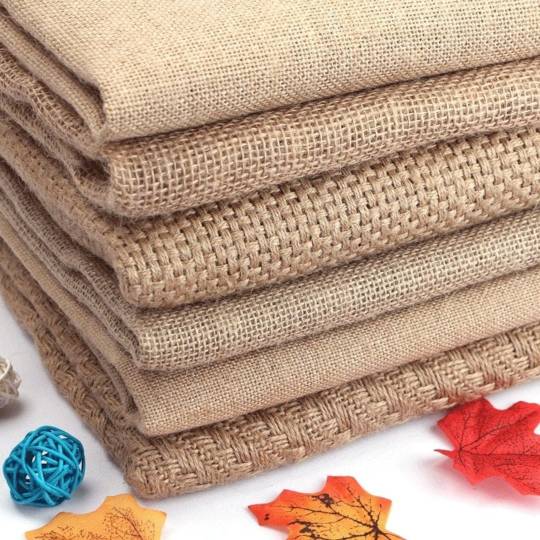






https://tinyurl.com/5n8he4hb
#jute rugs#jute rope#jute bags online#jute bags market#jute bag manufacturer#jute Yarn manufacturer#jute fabric manufacturer#jute sacks manufacturer#jute fibre manufacturer#jute carpet manufacturer#jute Handicrafts manufacturer#jute sand bag manufacturer#raw jute Exporter#jute farmer#organic Jute
0 notes
Text
Yes, you'll think this is crazy
So... Yes, Jesus is God. That's not the concern... unless you're saying He doesn't exist or ignoring by His stripes we are healed.
Anyways, 3rd Seal. So, there has been a concern... or at least I have had a concern that the 3rd Seal is 2020 through 2026. The literal stuff on the page is luxuries are available (wine and oil) while needs get expensive (wheat and barley; also generally speaking food needs). Leviticus 25 has weekly time periods of years. Hence, if it were a week of years, there's till 2026 for the color black(empty pantries, barns, silos, and dead tech) to visually appear. The solar cycle is odd. It's also impressively strong. It also peaks in 2024, which being an odd solar cycle means 2025 and 2026 are the worst years of it. Hmm... dead tech - check. Russia and Ukraine used to export 1/3rd of the World's wheat when combined, making a long term war destroy a 1/3rd of the world's wheat.... empty barns, silos, pantries - check.
But what about wars between big nations? Like Russia, China, US, and so forth. Seal Four has the Rider of Death. That pretty much covers it, doesn't it? Seal Four is going to be really awful and if you don't get off the Earth or underground before the awful starts, life is going to suck. For 7 or 8 years...
What's the time between Seal 3 and Seal 4? I've only seen one thing in the Bible Code, and quite honestly that's in a story and private. So, no, that's for one person and one person only.
The rest of you, who have the means or duty, please consider saving 20+ kilo bags of rice and beans for 2026... so your family is alright, so your church is alright.
You, dear writer, are nuts.
Okay.
But don't say you weren't told.
(I didn't mean to post on this tumblr. But... it's what it is.)
I fear God. I fear this is real. I fear no one is prepared. I fear needless death because no one considered this.
#Revelation#revelation#three#third#3rd#Seal#3rdSeal#3rd Seal#Third Seal#Bible#bible#God#YHWH#Fear God#Fear YHWH#Fear The Lord#Seek Jesus
0 notes
Text
Modern Food Systems and Globalization
Modern food systems and globalization is a big part of food in my life. A food group that is affected by this is nuts. This food is something that I consume daily as part of a diet regimen as well as to keep myself healthy. They have a lot of benefits that are attributed to them, which is a reason why people tend to frequently consume them. In the United States, the potential exports of nuts are gradually increasing and are being produced at a higher volume (Barr, 2017). There are a lot of consumers that want the product and in the United States, they are pretty easy to find. They are in supermarkets, convenience stores, or even gas stations. They are pretty accessible, however, they can be expensive. Sometimes a bag of nuts (8 oz), such as cashews can be from six to eight dollars. Because of globalization, nuts can be used in different ways. They can be used in cakes, in different kinds of dishes to eat (like chicken), made into spreads (peanut/almond butter), or even made into milk (almond milk). An example of the globalization of almond milk is that it originated in medieval Europe, and is used today for different food selections such as cereals or coffee (Learn, 2021).
Barr, T. N. (2017, November 18). Global transitions will drive tree nut export potential. Global Transitions Will Drive Tree Nut Export Potential | INC - International Nut and Dried Fruit Council. Retrieved October 5, 2022, from https://www.nutfruit.org/industry/publications/inc-magazine/articles/detail/global-transitions-will-drive-tree-nut-export-potential
Learn, J. R. (2021, February 9). People went crazy for almond milk in the Middle Ages. Discover Magazine. Retrieved October 5, 2022, from https://www.discovermagazine.com/planet-earth/people-went-crazy-for-almond-milk-in-the-middle-ages

0 notes
Text
The difference between eight side seal bags and stand-up pouches
Jiecheng is a manufacturer of packaging bags, and the company introduces the difference between eight-side-seal bags and stand-up pouches.
The attractiveness of eight-side-seal packaging bags.
Nowadays, with the further development of the market economy, the public in the procurement of products, more and more from the practicality towards the direction of ornamental, so in order to attract more attention of consumers, businessmen in the packaging of all kinds of efforts, as far as the packaging bags, eight side seal bags are also increasingly loved by the public.
The advantages of eight side seal packaging bags:
First, from the name of the eight side seal bags to analyze, eight side seal has eight edges, the bottom four edges, left and right two edges, the advantage of this setting is that the left and right as well as the ground can be expanded, to a certain extent, to expand its use of space.
Second, the eight side seal bags can stand firmly on the shelves, playing a perfect display effect, compared to the soft lying on the shelves of the product, so more intuitive.
Third, the eight side seal bags are more widely used in nut products, generally in the packaging of such products will be attached to a self-sealing zipper, convenient for consumers in the process of consumption did not eat all at once, the bag mouth can be simply sealed up, convenient for repeated use, but also so that the product inside is not easily damp. Eight side seal bags as the last two years more popular packaging methods, with a strong vitality, in the last two years there will be more demand generated.
The difference between eight side seal bags and stand-up pouches:
The difference between eight side seal bags and stand-up pouches, after the above description, in fact, the difference between the two is still very obvious. First of all, the bottom of the stand-up pouch is not flat, while the bottom of the eight-sided seal is flat; there is the number of their edges are also different, stand-up pouches it has 4, eight-sided seal bags have 8; in addition, the number of display surface is not the same, stand-up pouches it only 2, while the eight-sided seal bags it does have 5. The overall view of the series, stand-up eight-sided bags than stand-up pouches are more superior, more three-dimensional, more smooth; however, the price is relatively expensive, but also in the technical requirements are higher.
Definition of stand-up pouches:
In fact, there are many people on the Internet is defined as follows: can not rely on the support of external objects, by virtue of their own can stand on the bag, this is called stand-up pouches. In fact, such a definition is easy to confuse stand-up pouches and eight side seal bags. If the bottom has a foldback and two edges, left and right sides have a seal, after the bottom is propped up, the bag can stand on its own, it is called stand-up pouches.
Definition of eight-sided bags.
Eight side seal bags can also be called eight side seal stand-up pouches, its bottom is flat, and a total of eight sealed edges, so called eight side seal bags. The bottom has four edges plus two edges on the left and right sides, a total of eight edges. Eight side seal bag it has a total of five display surface: one on each side of the front and back, one on each side of the left and right, plus one at the bottom. An eight-sided bag like this can carry more media information because it can better display the food and its brand inside.
Jiecheng is a manufacturer of packaging bags, with a wide range of products exported overseas and recognized by everyone. If you are interested in packaging bags. You are welcome to contact with our company.
0 notes
Photo










National Walnut Day
Go nuts for walnuts! These crunchy delights pack a punch of flavor and nutrition in every bite. Sprinkle them on salads, bake them into treats, or snack on them straight from the bag. It's a nutty good time!
Go nuts about walnuts in honor of National Walnut Day! This ancient, healthful nut makes a great addition to sweet treats, salads, trail mixes and so many other interesting dishes. While other nuts often take center stage, the walnut is absolutely worth celebrating and appreciating on National Walnut Day.
History of National Walnut Day
As the oldest known tree that has provided food to humans, walnuts have a history that can be traced back for thousands of years. It didn’t take long for humans to discover that the walnut is an easy to store and simple to eat nut. Plus, it travels well and offers great nutritional benefits.
In Persia, the walnut was referred to as the Royal Nut and it was only allowed to be eaten by people of royal heritage. During the reign of Alexander the Great, the walnut was brought to Greece from Persia and it was referred to as the Persian Nut for more than 1000 years. However, over time, the Greek version became smaller and inferior to the Persian walnut. In fact, the Greeks were envious of the Persian walnut, so they brought some Persian cultivars back to Greece to improve their breeds.
The Greek name for the walnut is karyon, which means head. This is actually fairly spot on, because the outside shell resembles a human head and the interior nut looks a bit like a brain!
Walnuts likely made their way further into Europe somewhere between 500–700 BC and then moved west after that. The nut probably traveled to the British Isles with the Roman Empire. It was somewhere around this point that it picked up its name “English walnut”, which is used to distinguish it from the black walnut.
Eventually, the walnut crossed the ocean and found a path to the New World. It was a group of Franciscan Fathers who found that the climate of Southern California was an important one for growing these deciduous trees. And this is likely the reason they picked up the name “mission walnuts”. California walnuts have become so popular that they account for 99% of the commercial walnut industry in the United States, a large portion of walnut trade in the world.
National Walnut Day dates back more than 70 years! It was in 1949 that the Walnut Marketing Board in the United States established the day with the purpose of celebrating and promoting this delicious and nutritious nut. US President Dwight D. Eisenhower made the day a public holiday in 1958 and National Walnut Day has continued to be celebrated every year since that time.
National Walnut Day Timeline
7000 BC Humans cultivate walnuts
The oldest tree food known to man, walnuts are cultivated starting in Persia.
1754 BC First documented account of the walnut
The cultivation of the walnut is mentioned in The Code of Hammurabi, the oldest code of laws in the world.
600 BC Walnut plants arrive in Europe
Around this time, the walnut plant makes its way from Persia into Europe.
17th Century AD Walnuts land in America
English settlers are responsible for bringing walnut plants to the New World.
Late 1900s Walnuts are cultivated in Chile
The climate in Chile does well for growing walnuts and the country eventually becomes the world’s third largest walnut exporter.
How to Celebrate National Walnut Day
Enjoy tons of fun on National Walnut Day by celebrating in style with some of these tasty ideas:
Learn Some Health Benefits of Walnuts
National Walnut Day is a perfect time to get a bit more familiar with some of the health benefits that are offered by this little nut. Take a look at these ways that the walnut is a healthy choice for snacking and baking:
Filled with Antioxidants
High in Healthy Fat
Promotes Gut Health
May Decrease Inflammation
Walnuts contain the most antioxidants of any of the commonly eaten nuts. The high Vitamin E content, melatonin and polyphenols can help to prevent oxidative damage and promote the lowering of “bad” cholesterol.
Omega-3 fat is an essential ALA (alpha-linolenic acid) that is a vital part of the human diet, especially for the prevention of heart disease. A single one ounce serving of walnuts provides a full daily supply of this important nutrient.
Walnuts offer essential bacteria and microbes that help with the functioning of overall gut health.
One of the common triggers for health problems in inflammation and walnuts offer nutrients, such as polyphenols, that can reduce oxidative stress that tends to cause inflammation. This could be beneficial in reducing heart disease, type 2 diabetes, Alzheimer’s disease and even cancer.
Make Some Candied Walnuts
While candied pecans and toasted almonds are often thought of as some favorite snacks made from nuts, candied walnuts are absolutely worth trying out. Candied walnuts are delicious for snacking, adding as a topping to salads or used as a garnish on cakes and other sweet treats. And, they’re super easy to make!
Really, it’s as simple as just three ingredients: walnuts, butter and sugar. Add all of the ingredients to a skillet and heat for five minutes over medium heat, stirring constantly. Separate nuts on parchment paper and allow to cool.
Share Fun Facts About Walnuts
One super clever way to raise awareness about the goodness and health of walnuts might be to learn a few bits of trivia about this nut that can be shared. Tell friends and coworkers about some fun facts while encouraging them to celebrate National Walnut Day in their chosen fashion.
Get started with some of these:
Even since ancient times, walnuts have been used for various health benefits and have even been considered to be medicinal for treating issues such as bad breath, wound healing and reduction of inflammation.
Walnut trees can grow to be very large, up to 60 feet tall. They can produce walnuts for more than 100 years!
Walnuts are best when kept cool, so it’s ideal to store them in the refrigerator or freezer for the best flavor and the longest life.
The state of California produces approximately one billion pounds of walnuts every single year. Now that’s a whole lot of nuts!
Make Baked Goods with Walnuts
Enjoy the delicious National Walnut Day by getting some walnuts for the kitchen and adding them to a variety of baked goods. This might mean adding chopped walnuts to a loaf of banana bread, a selection of oatmeal muffins, a pan of freshly baked brownies or a variety of other tasty baked treats. Be sure to bake up extra treats with walnuts and pass them out at work, share them with neighbors and offer them to family members in observance of National Walnut Day!
National Walnut Day FAQs
Are walnuts good for you?
Some studies have shown that walnuts are a source of vitamins and minerals, as well as lowering “bad” cholesterol.
How to toast walnuts?
Walnuts can be toasted in a single layer for 8-10 minutes at 350 F.
Can dogs eat walnuts?
Though it may not hurt them to have a stray walnut, dog owners should avoid feeding them to dogs as they can be a choking hazard.
Do walnuts go bad?
When exposed to heat for a period of time, walnuts can begin to smell rancid and taste bad.
Do walnuts have protein?
Yes, walnuts have 4.5 grams of protein per ¼ cup.
Source
#Lemon Semifreddo with walnut florentine#Manjar blanco with honey and nuts#dessert#restaurant#salami#olives#Tartufo#Germany#Spain#travel#vacation#Chef's Salad#Chocolate Frey#Lindt & Sprüngli#Lindt#Swiss chocolate is the best#I only eat Swiss chocolate#Lindt Pralines Connaisseurs#Lindt Pralinés du Confiseur#Honorary Texan Burger#USA#National Walnut Day#17 May#original photography#NationalWalnutDay
2 notes
·
View notes
Text
Food Grade Jute Bag Produced and Exported by Asia Jute Bag Sack Company
Understanding Food Grade Jute Bags
Food grade jute bags are specialized packaging solutions designed for the storage and transportation of food products such as grains, pulses, nuts, and spices. Made from natural jute fibers, these bags are manufactured to meet stringent food safety standards, ensuring the integrity and freshness of the packaged goods.
Importance of Food Safety
Food safety is…

View On WordPress
0 notes
Text
Best coco product exporters in India
Bhumer exim is an export and import company which connects buyers and sellers all around the world. We provide import, export, trading and logistics services all over the world. We are one of the best importer and exporter from India who provide good services all over the global market. We have involved in exporting high quality products to the Global Market. We are assured about the prompt delivery and quality of products.
We import and export all products especially agricultural products, food, vegetables and fruits, coco products, medical supplies, textile products, electronics products and many more based on the market demand and customer needs.
Are you a seller looking for an exporter? Are you looking to sell your products into India? Bhumer Exim will be the best choice for importing and exporting products all over the world.
Bhumer Exim is one of the best coco product exporters in India. Coco products are one of the highest demand products internationally which includes coco peat, fiber, coconut, copra, oil, fresh nuts, desiccated coconut, coconut water, lumber, and processed foods, etc. Coco Products sources and distributes all natural and eco-friendly products made from coconut coir. Using coco peat you can cultivate anything using grow bag etc.
For any import and export queries:
Mobile: +91-9489627279
Email: [email protected]
Website: http://www.bhumer.com/
Address: First Floor, Vabin Plaza, Near IOB ATM, Eraniel Road, Thingal Nagar, KanyaKumari District, Tamil Nadu, India - 629802.
0 notes
Text
Fully Automatic Cashew Kernels Pouch Packing Machine, Cashew Tin Packing System Manufacturer Supplier
Completely processed cashew kernels are bulk-packed to meet EU and USA weight criteria, with a net weight of either 25 pounds or 50 pounds (11.34 kg or 22.68 kg) for export shipment. Kernels are packed into 10 kg net weight containers for export to Middle Eastern nations. Cashew kernels are often packed in eighteen-liter square tins, vacuum-sealed, impregnated with carbon dioxide, and hermetically sealed for a longer shelf life and pest protection. These days, multilayer plastic bag packing is preferred by importers and exporters. After being vacuum-packed, the pouches are filled with inert gases such as carbon dioxide and nitrogen and sealed. Two sealed tins are contained in a carton. Two sealed bags weighing 25 pounds net each are placed inside a container.
Two sealed bags weighing 25 pounds net each are placed inside a container. One sealed fifty pounds net weight item is packed in a carton. For both tin and pouch packing, the carton size stays the same.
To extend the shelf life of packed kernels, packing is done using multi-layered leak-proof pouches that are vacuum-sealed to eliminate oxygen and infused with inert gases like nitrogen and carbon dioxide.
#cashew pouch packing machine#automatic pouch packing machines#cashew kernels packing machines#cashew nut tin packing
0 notes
Text
Zhongli(history teacher): What do you think is in the bags being exported?
Ganyu: sand?
Keqing: soil?
Xiao(completely serious): nuts
Zhongli: hmm… what kind of nuts?
Childe(in the back): DEEZ NUTS
#genshin#Genshin impact#genshin incorrect quotes#genshin incorrect#incorrect genshin impact#incorrect genshin quotes#incorrect#incorrect quotes#zhongli#xiao#childe#genshin tartagalia#tartaglia#genshin zhongli#genshin xiao#the answer was actually peanuts :|
82 notes
·
View notes
Photo
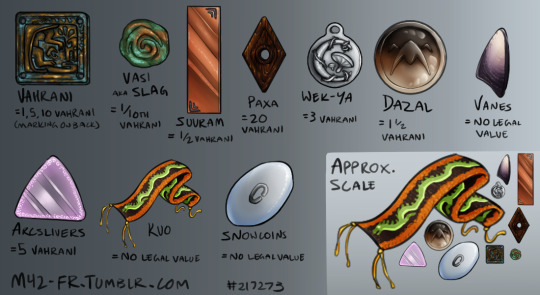
Here’s my Lore Post™ on various types of common currency around Sorneith! Note that this covers only major forms of currency that can be found broadly throughout their territories of origin, or are otherwise culturally relevant in some way. This post does not include forms of currency that may exist between individual clans. If you happen to find that any of this worldbuilding goes well with your lore, feel free to use it so long as you credit me somewhere for the idea!
And, of course, a mandatory disclaimer: the names and lore of these currencies comes from my own head (and a random name generator). Any resemblance to anything from the real world is unintentional.
Vahrani (vah-RAH-nee) are small bronze coins that originate from the Ashfall Waste. Thanks to the Flamecaller’s ceaseless forges, vahrani are the most common and well-established metal-based currency in the world - and, in fact, are the most well-established currency in the world, period. Trade with the neighboring Windswept Plateau, which exports the products of Fire’s industry to every technologically developing region on the continent, has spread Ashfall coinage far and wide.
Most vahrani have been in circulation for decades, their surfaces oxidized completely teal-black. Pristine, metallic vahrani, either newly-minted or freshly polished, are considered a status symbol by some, but certain dragons may refuse to accept them as payment for fear that they have been recently (and illegally) forged. Vahrani jewelry makes use of the holes at their corners, stringing them together into necklaces, earrings, and other forms of decoration. In a pinch, vahrani can even be tiled together to create makeshift armor.
Vahrani come in units of one, five, and ten. These coins bear an identical picture of the Flamecaller on one side and have a number inscribed on the other, which indicates their worth. The runoff copper from the creation of vahrani bronze is pulled into small lumps and stamped with the sigil of Fire while the metal is still hot, creating small, misshapen coins called vasi - or, in common slang, slag - each worth a tenth of a vahrani. Vasi are not nearly as widespread as vahrani, but they make up the majority of the payroll for poorer dragons within the Ashfall Waste.
--
Suuram (SOOH-ram) are long, paper-thin copper chits used as currency within the southwestern Shifting Expanse. The very first suuram were copper wires that had been pounded into rough rectangular shapes, but modern suuram are machine-punched from massive metal sheets, ensuring an incredibly consistent size and weight. The asymmetrical pattern of crescent holes at their edges is meant only to distinguish them from simple copper pieces. In practice, the holes are often used to hold chains of coins together with cord or metal clips.
There is only one value of a suuram piece. Rather than create different coins with higher values, dragons exploit the extreme thinness of suuram sheets by packing pieces into small containers; informal higher-value units consist of rectangular boxes holding a carefully-counted number of coins. Carrying around large blocks of copper sheets can become awfully inconvenient, so five-and-ten vahrani pieces have become a popular alternative currency in the Expanse. Suuram are used mostly as pocket change.
Due to the relative geographic isolation of the far coast of the Stormcatcher’s territory, suuram are not particularly popular outside of the Shifting Expanse, and lack traction everywhere past the Charged Barrens. However, suuram are acknowledged as a valid currency in every territory with flourishing trade and worldwide connections, including the Ashfall Waste, Windswept Plateau, Sunbeam Ruins, Tangled Wood, Starfall Isles, and Dragonhome.
The northeastern region of the Shifting Expanse is home to independent scavenger-clans who have little need for formalized currency. Rather than conducting trade with stand-ins like coins, they prefer to directly exchange goods and services, determining the value of each with every new trade. That being said, they do occasionally make use of a form of unregulated, low-value currency, colloquially known as scrap.
Scrap refers to any collection of relatively small, portable, usually worn-down and otherwise useless metal chunks - rusty nails, old gears that don’t fit anywhere, spare nuts and bolts found half-buried in the sand, weathered iron spring-coils and copper wires, and so on. While scrap has no immediate survival value, it serves much the same purpose of currency in that it acts as a metaphorical stand-in for something that is of value, and can be exchanged with others for goods and services. Scrap is considered a valid currency within the northern Expanse, although it is often looked down upon as a ‘primitive’ coin in the more technologically developed regions around Goldensparc and the Lightning Farm.
--
Paxa (PACKS-uh) are hand-carved wooden chits infused with sparks of magic that keep them pristine even under the worst of abuse. Native to the Sunbeam Ruins, paxa owe their remarkably high value to the painstaking process of crafting them. Each coin is hand-carved to impossible standards of consistency, stained a beautiful deep ebony, and protected from damage with ancient Light artefact-preservation magicks. Their magical ‘fingerprint’ is nearly impossible to fake, which guards them from forgeries. The secret to creating paxa is zealously guarded by a handful of dragons who have dedicated their lives to the craft.
Paxa are a universally recognized coin, spread throughout the world by Light’s investment in research as well as their inherent value. Future-minded dragons convert their retirement savings into paxa, knowing that unlike many other currencies, the tight control on paxa production ensures that their value remains constant. Paxa is also the coin of choice for most illegal operations in Sorneith thanks to their high value and their impossibility to falsify.
The average working-class dragon, even in the Ruins, will struggle to get their talons on any significant amount of paxa. Paxa are used to facilitate expensive transactions, and as such are favored by merchants, the wealthy, and the criminal; throughout most of the Sunbeam Ruins, workers are paid in vahrani, with the occasional handful of suuram thrown in for variety.
--
The origin of wek-ya, (WEK-yuh) Shadow’s mercurial coinage, is shrouded in mystery. Nobody knows when or where the first wek-ya were made - and, in fact, nobody knows how to make wek-ya at all. Ambitious blacksmiths who try their hand at smelting some are invariably struck with tides of bad luck that force them to close shop. And, moreover, the Tangled Wood can hardly be said to have an established government, so the presence of such a widespread and standardized currency is a curiosity in and of itself.
Wek-ya are crafted of pure silver, or something that resembles it. Each coin has two unique patterns - one to either side - that depict an incredibly broad array of subjects. The most common motifs are crescent moons, mushrooms, thorns, and dancing dragon figures, but there have been wek-ya known to picture oddly specific situations, such as trees being struck by lightning, rats climbing atop bookshelves, and draconic silhouettes that bear a strange resemblance to the viewer in the midst of suffering some catastrophe. Many dragons believe that wek-ya are infused with divination magic; coins are commonly drawn from bags to determine future events, and some individuals claim that their fortunes are told by the wek-ya they receive in trades.
While wek-ya are the most common form of money in the Tangled Wood, they’re incredibly rare elsewhere. Common superstition holds that removing a wek-ya from its homeland will curse the coin’s bearer until it has been returned. There appears to be some vague truth to the statement, as the coins are known to have a way of mysteriously disappearing when they’ve spent too much time away from the Shadowbinder’s influence.
Wek-ya are capable of emitting a dim glow for several hours after being exposed to moonlight. Conversely, they’ve also been known to spontaneously melt when placed in sunlight, permanently disfiguring their faces - such coins are considered overwhelmingly taboo by most residents of the Wood and are traditionally thrown into bogs, rivers, and liquid-shadow ponds, such that they may be forever forgotten.
--
Dazal (day-ZAHL) are large, chunky coins cut from smoky quartz. They come from Dragonhome, make for an uncommon sight in the northern Starfall Isles and Tangled Wood, and are rare elsewhere. No one institution governs the production of dazal, but most dragons don’t go out of their way to fake them - the coins are used predominantly within the handful of high-population regions of Dragonhome, particularly Terraclae and the Colonnades of Antiquity. Thanks to Light’s vested interest in archaeology, paxa are the most common currency in Dragonhome’s urbanized regions, followed by the eponymous vahrani.
Unlike suuram, which are largely shunned by Lightning’s more independent desert-dwelling clans, the value of dazal is respected by clans among even the most rural and harsh environments of Dragonhome. Most groups will carry at least a handful of them to use in trades - a few dazal will buy a weary traveler water and other goods. The nomadic routes of the Snappers often bring them to urban areas every now and again, which makes holding onto the currency useful, if occasionally burdensome.
The distribution of colors and patterns in a dazal is unique to every coin. Dazal have no varied values in a legal sense, but many individuals within Dragonhome will accept morion dazal - that is, those made of smoky quartz so uniformly dark as to be nearly black - as being worth twice as much as a singular dazal (or equivalent to one wek-ya). Some seek out dazal with unusual color schemes for collection purposes. Another commonly-sought variant is a coin without any scuffs; though crystalline, most older dazal are ridden with chips and cracks.
--
The Sea of a Thousand Currents has no legally recognized currency. The stinging seawater makes metal-based money impractical, and even the magical toughness of paxa and arcslivers will wear under the waves. Among the more isolated, aquatic clans, though, an informal coin known as vanes (VAIN) are used in some transactions. Vanes are seashells that have been chipped and polished into glistening, guitar-pick shaped chits.
The production, distribution, and value of vanes is entirely unregulated. Any dragon with strong hands and sandpaper can collect seashells and file them to the right shape and smoothness. As such, individual vanes vary widely in color, texture, and shape. The value of a vane is equally variable - no bank in the world accepts vanes as legal tender, although they are acknowledged as being incredibly low-value, presuming they have any worth at all.
Bags of vanes are often exchanged by coastal and reef-dwelling clans as stand-ins for the payment of debt. If an individual needs a good or service, but cannot pay for it at the time, they can hand over some vanes that serve as a sort of credit, later giving something of real value in return for their lent vanes.
Among the roughshod sailors of the Sea, bilgespray is a tawdry term used to refer to any collective mix of multiple types of currency. The wide variety of territories that they visit throughout their trading routes means that they inevitably collect a number of different types of coin. The term, ‘bilgespray,’ usually refers to a singular payout given in more than one type of currency, but used more broadly may account for any messy assortment of multiple types of money.
--
Popular within the urban areas of the central Starfall Isles, arcslivers (ARK-slih-vur) are tokens cut from the same magically-refined arcglass that makes up the shell of the Astrolodome. Their edges are inscribed with faintly-glowing runes that, like paxa, protect them from damage, although their enchantments are comparatively weaker. The appearance and value of an arcsliver is standardized; their production is controlled by banks within the Astrolodome and neighboring communities.
Well-wrought trading routes have established arcslivers as a valid currency throughout the entirety of the Isles. However, they have very little steading outside of Arcane’s territory. Similar to suuram, geographic isolation has kneecapped their spread, with traveling arcslivers found mostly in the neighboring regions of Dragonhome and the Windswept Plateau; a handful make their way to the Sea of a Thousand Currents and beyond from there. Though rare, they are legally acknowledged in institutions around Sorneith.
--
Given the extremely well-connected, trade-focused culture of the Windswept Plateau, every currency - even strange or worthless ones, like wek-ya and vanes - can be found in abundance among Windsinger’s children. Vahrani from the neighboring Ashfall Waste are the most common coin, followed by paxa and arcslivers. Wind does not have a traditional currency in the way that other territories do. Rather than use a standardized object to represent physical value, Wind’s unusual currency holds strictly social value. These objects are called kuo (KOO-oh). They are long, ribbonlike textiles, made from hundreds of tiny interwoven beads, and are as much art as they are money.
The length of an individual kuo can vary considerably. Most are long enough to be used as sashes and belts, or be hung up as colorful banners. The harvesting, sculpting, weaving, and painting of their miniscule beads takes a painstaking amount of time and skill. As a monetary system, they indicate debts, allegiances, and other forms of social ‘money,’ whether paid or owed. The perceived value of a kuo is usually based on its size and craftsmanship - the longer and prettier, the better.
While more rural and traditional clans will use kuo for their original purpose, younger generations - particularly those living in more urbanized areas - forgo the social value of kuo and create them for artistic purposes. The creation of an individual kuo ribbon is considered a long and meditative pastime. The patterns in every ribbon are unique, and the abundance of beads and paints mean that elaborate images can be threaded along the strings; given the extensive length of most kuo, many are used to depict the events of stories, be they mythical or factual. The longest kuo is rumored to be a ribbon that stretches the distance of the Cloudsong and depicts an embellished version of the Windswept Plateau’s entire history.
In recent times, dragons have begun to weave kuo as gifts and decorations. Many young lovers and best friends will create kuo for one another, its pictures personalized to the other’s interests and personality, and wear the bands that they themselves were given (usually as scarves, sashes, or bracelets) in an open declaration of their bond. Kuo are becoming an increasingly popular export of the Windswept Plateau. Eager to share their culture with the world, Wind dragons often sell and gift kuo to travelers, and some have even begun to export them to other territories.
--
The rough, lonesome barrens of the Southern Icefield makes the establishment of currency incredibly difficult. Like other harsh environments in Sorneith - the Shifting Expanse, Dragonhome, the Scarred Wasteland, and so on - coins are not particularly useful for immediate survival, and so trades are preferentially conducted with goods and services rather than coins. Northernmost or otherwise trade-savvy clans may occasionally cut deals with foreigners using vahrani, arcslivers, and even suuram.
The ancient institutions of the Gaolers, for all their fervence with law and order, never had reason to establish an expansive currency amongst themselves. The basic needs of all individuals are cared for free of charge; anything fancier is either owned communally, acquired by advancing in rank, or traded for without monetary stand-ins. Among a few circles, though - and particularly popular in teaching discipline to younger recruits - is a token system using units called snowcoins.
Snowcoins are very simple constructions. At their core is a singular link of a metal chain, which is encapsulated in magically-unmelting ice. The surface of a snowcoin is smooth and convex, forming an oblong shape not unlike a river stone, and they are remarkably translucent. Snowcoins, then, are a small reward earned through various services and good behavior, and can be traded in for small personal luxuries. The things snowcoins can buy consist mostly of curios and other decorative trinkets.
Given that snowcoins are used only by the Gaolers, their existence is almost completely unheard of throughout Sorneith, even in the neighboring Snowsquall Tundra. Only a tiny handful have ever made it out of the Icefield - and even then, most of those found away from the Icewarden are replicas, not genuine. Those who are in possession of snowcoins usually regard them as oddities and collectibles. They hold some mildly curious historic value, but little else.
--
For all their hatred for one another, the territories of the Scarred Wasteland and Viridian Labyrinth share a similar trait: neither has much in the way of currency. The Labyrinth prizes self-sufficiency and its clans want for little. Their isolationist nature has created a strict limitation on the influx of foreign currency - not even vahrani have made it past their coastal regions. Those from Nature who detest outside influence often use the derogatory term rootmuck to refer to any form of outside currency.
While Plague has a similar lack of established money, they don’t hold the same wariness of foreigners that the Gladekeeper’s children do. Most Plague clans see no reason in shunning something that may help them acquire useful things in the future. Various currencies are common at their respective borders - dazal in the north, wek-ya in the east, vahrani to the south, and arcslivers to the west.
That being said, their central clans, much like those of the northwestern Shifting Expanse, trade mostly survival supplies with one another. Guttergunk is an informal term from the Wasteland that applies to any assortment of individually worthless items that are bundled together to have some collective value. Guttergunk is not anything that could keep you alive; it’s made of things like small trophies - teeth, scales, horns -, the last of old food preserves, tattered pieces of canvas, balls of string, and so forth. Trade offers of guttergunk are considered trashy, greedy, or desperate; in other words, a sign of either arrogance or weakness, perhaps both.
Alternatively, the term may apply to anything considered gross and worthless: “Your efforts are guttergunk,” is an example of a common insult. The word has become popular in neighboring territories, particularly by residents of the Driftwood Drag and sailors of the Sea of a Thousand Currents, and among them it has much the same meaning.
#flight rising#my lore#my headcanons#my art#my worldbuilding#long post#the flamecaller#THREE. THOUSAND. WORDS.#this post KILLED me to write#but man did i have fun... the drawings were especially really neat#I'm very fond of how vahrani. paxa. and vanes came out in particular#rip vanes my worthless children but i love you anyways
236 notes
·
View notes
Text
ROASTED TURKISH ANTEP PISTACHIOS WHOLESALE
ROASTED TURKISH ANTEP PISTACHIOS WHOLESALE
Pistachio in Turkey are harvested in late August and early September. During this period, the fruit peel turns from transparent to opaque. The red shell softens and becomes easily separated from the hard shell. When pistachios become like this, they are fully ripe.

Sometimes, fully ripe Turkish Antep pistachios fall to the ground by themselves with the effect of the wind. When harvesting pistachios, first of all, the peanuts that fall into the ground by themselves are collected. These peanuts are very valuable. These Turkish pistachios nuts are called "under tree pistachio". Fully ripe Turkish pistachios falling into the ground by themselves are very delicious. The natural opened rate will be very high.
In fruits that have reached this maturity, the dry internal weight and the amount of oil are at the highest level. During this period, the harvest should be finished within a week. It will be late in the collection process after this important period.

When pistachios are harvested early, their internal yield will be low. However, the Turkish pistachios that are collected early are very valuable. Early harvested pistachios are called perfect green pistachio kernels. Perfect green pistachio kernels are used in the production of Turkish baklava and desserts. Perfect green pistachio kernels, which is very delicious, is the most expensive kind of stuffing.
Harvest period should be followed well. Efficiency and profitability are higher in pistachio collected in the right period. In the southeast region, this period generally coincides with the end of August. In warmer regions, harvesting can be done in mid-August. In higher regions, it should be finished around mid-September.

When you harvest early, the inner parts of the fruits will be green. When you harvest late, the red bark shrivels and dries up. These fruits, which are in the clusters of pistachios, do not ripen at the same time. Ripening takes place first in the fruits located at the end of the cluster. In general, the first fruits are poured from the tree branches to the ground before the harvest time. These fruits, which fall under the tree, become more delicious when dried in the shade.
It is offered for sale as a snack without any action. When harvesting, the cluster should be collected without plucking it from the branch. It is wrong to carefully pick and collect the fruits one by one. If the collection is done in this way, the cluster stems on the tree remain. Shaking tree branches and hitting branches with sticks is also not a correct technique. By doing so, we can damage tree branches. These ripe fruits are called ''Ben Fıstık''.
These fruits are easily separated from the clusters. Fruits that do not fall are selected and sorted one by one. The collected Turkish pistachios are packed in bags and taken to the exhibition areas. Fresh fruits should not be kept in sacks for a long time. Since the fruits are wet, they can mold easily. Also, plastic bags should not be used. If we dry the fruits while they are fresh, the cracking interval will be wider.

Pistachios with a wide cracking range are of good quality. Pistachio harvesting in America is done with electronic devices. Harvests are collected from the tree by vibration, which saves a lot of time. They harvest a tree in approximately one minute. In Turkey, this harvest is done by hand.
Wholesale Of Roasted Pistachio Nuts
Our company is a wholesale of roasted pistachio nuts. We are located in Turkey. Turkish pistachios wholesale company is also exporting goods. Our company export Turkish pistachio all over the world.
#pistachionuts#pistachio#turkishpistachio#turkishdelightpistachio#turkishanteppistachio#turkishpistachiobaklava#baklava#turkishbaklava
5 notes
·
View notes